Some have described jeans shopping as “soul crushing,” “self-esteem destroying,” “masochistic,” and “terrifying.” How many times have you been lured into a store by a sign reading “JEANS: 50% OFF,” only to leave the store’s dressing room practically in tears after trying on a pile o’ unflattering denim?
Well, this jeans primer is not going to change the fact that designers mass produce clothing for body types that are unattainable to the majority of us. It is also not going to change your body type. But, it will outline some basic “jeans 101” so that you have some foundation when you are diving into the process of finding a perfect pair, especially in a market that now has an overwhelming number of cuts and styles.
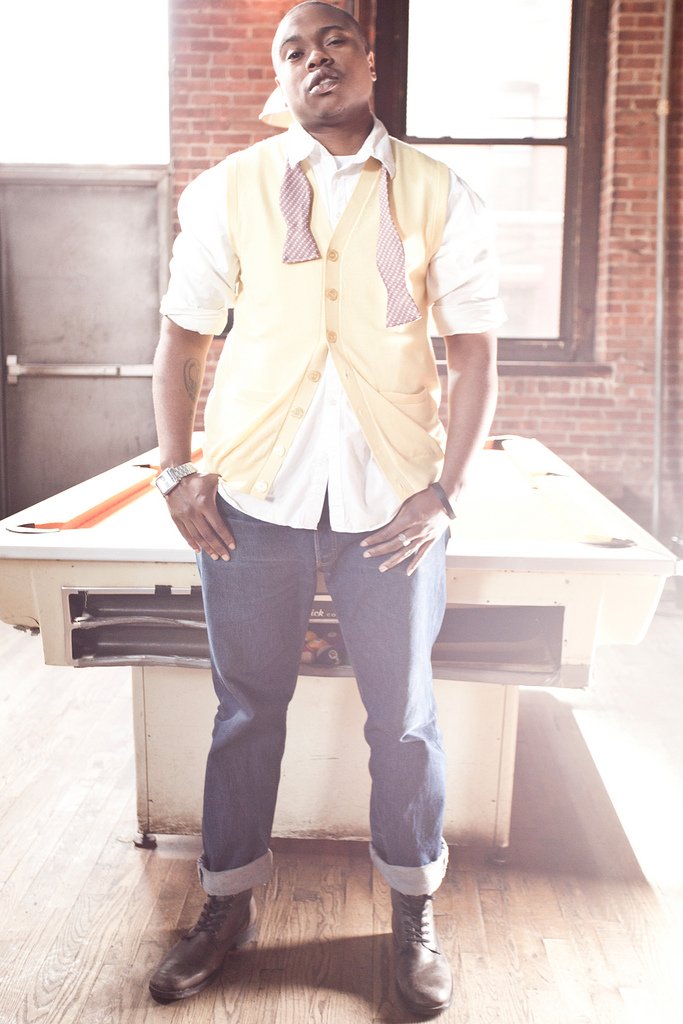 dapperQ He Said/We Said model Tiq Milan rocks Levi’s. Photo by Vito Fun.
dapperQ He Said/We Said model Tiq Milan rocks Levi’s. Photo by Vito Fun.
1. FIRST THINGS FIRST: KNOW YOUR MEASUREMENTS
Many brands will have sizes that read something like “34×32.” The first number corresponds to your waist measurement. The second number corresponds to your inseam measurement. So, I guess it’s sorta important to know your waist and inseam measurements, no?
How to measure your waist:
-
- Measure around where you normally wear your pants (e.g., about naval level or at the top of your hip bone).
- Put one finger between your body and the tape measure to allow for seating and “eating” room.
How to measure your inseam:
-
- Remove your shoes.
- Measure your inner leg from the lowest part of your crotch to your foot (bottom of the ankle).
*Vanity Sizing Alert: Esquire Magazine’s article “Are Your Pants Lying to You: An Investigation” reveals some of the waist size disparities between popular brands. Take a few different sizes in the dressing room with you, because the sizes on the labels may be deceiving.
Some dapperQs prefer the fit of women’s jeans (e.g., “boyfriend,” “straight leg,” and “skinny” cuts). However, women’s jeans are often sized with an arbitrary, single number, such as size “6”. There is no industry standard for women’s jeans sizing, meaning there is even less consistency across brands. While some women’s jeans do have sizes that correspond to your actual waist and inseam measurements, you should be prepared to accept that jeans with arbitrary sizing offer less choice regarding your specific inseam measurements; at best, these jeans may come in short, regular, or long. Do your research beforehand. Most retailers post size charts on their websites that provide ballpark waist and inseam measurements. When you get to know a brand’s sizing practices ahead of time, you’ll save time and won’t be devastated if you need to go up a few sizes when trying on brands that run small.
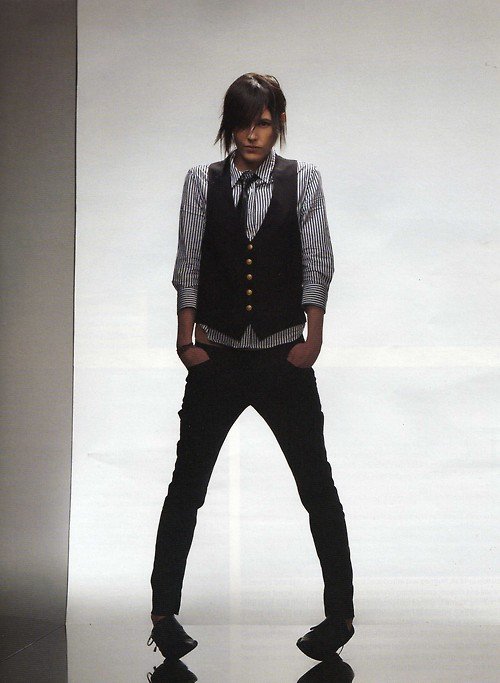 Katherine Moenning rocks a women’s “skinny” cut. Image via DYKE.
Katherine Moenning rocks a women’s “skinny” cut. Image via DYKE.
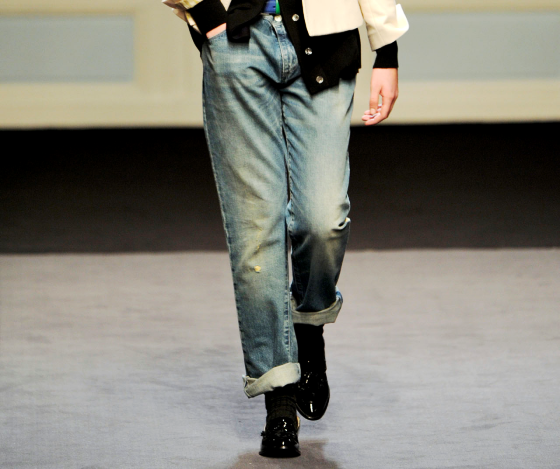 Another popular women’s cut is the “boyfriend.” You can style these Paul Smith “boyfriend jeans” masculine, feminine, and anywhere in between.
Another popular women’s cut is the “boyfriend.” You can style these Paul Smith “boyfriend jeans” masculine, feminine, and anywhere in between.
2. LESS IS MORE: INVEST, INVEST, INVEST
If you found the perfect pair of jeans for a couple of bucks at the thrift store, congratulations! Your patience has paid off and you’ve earned your treasure. But, if you find something that is anything less than perfect, put it DOWN. There is no sense in owning a million pair of cheap jeans that do not make you feel amazing. Invest in a few great pairs and take care of them. And, my golden rule: when you find a pair that you absolutely love, buy more than one in multiple washes, especially if you struggle with jeans shopping.
3. ALL ABOUT FIT
Matt Baldwin, Founder and Designer at Baldwin Denim, believes that, when it comes to jeans shopping, the number one mistake is buying a jean that fits perfectly because it’ll stretch about a full size during your first 30 wears. Always size down.
Menswear blogs from GQ to Esquire have noted that today’s jeans market is so saturated with confusing choices that anyone trying to buy a pair of jeans that just fits is often frustrated. If your body type doesn’t lend to the latest fit crazes, such as super skinny, do not beat yourself up. Jeans are a wardrobe essential and you should feel confident and comfortable in them. Stick with a classic cut and you won’t go wrong. Here’s some classic fits we love:
Slim Fit
Unlike Saran wrap tight skinny jeans, slim-fit jeans should gently hug the thighs, knees, and calves and loosen up around your ankles.
4. FINE TUNE: TAKE YOUR INVESTMENT TO A TAILOR
I get each and every single pair of my jeans tailored. I don’t have a choice. I’ve come to terms with it. I’m a size 4 to 6 and apparently fashion designers believe that if you are anything over a size 2, you must be at least 5’6” tall, which I am not. If you’re not 100% sold on the idea of tailoring, read more here. The key is to start with jeans that fit the largest parts of your body and then have a tailor take in any excess fabric.
5. BUILD YOUR JEANS WARDROBE: START WITH THREE PAIR
You may want to start with at least three pair of perfectly tailored jeans: a dark, medium, and light wash. This way, you will be prepared for all four seasons and have jeans you can wear to a variety of events with different levels of formality (e.g., football at the in-laws, clubbing, casual Fridays). You can add colors, such as white, tan, or gray, once you have the essentials.
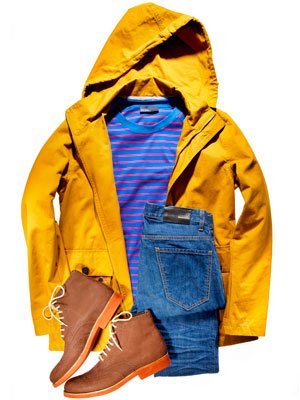 Casual classic wash via Esquire
Casual classic wash via Esquire
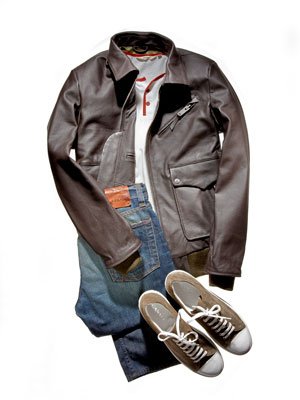 Sporty, predistressed vintage wash via Esquire
Sporty, predistressed vintage wash via Esquire
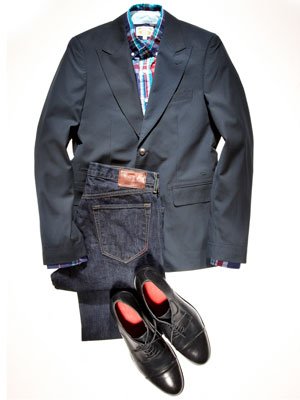 Dark rinse jeans can be dressed up or down. Image via Esquire
Dark rinse jeans can be dressed up or down. Image via Esquire
 Raw jeans are untreated, unwashed, and take forever to break in. But, the payoff is a great looking, unique pair of jeans that can be dressed up or down. Image via Esquire
Raw jeans are untreated, unwashed, and take forever to break in. But, the payoff is a great looking, unique pair of jeans that can be dressed up or down. Image via Esquire
6. TO CUFF OR NOT TO CUFF?
 Paris in Vintage Levi’s 505s. Styling and photography by Jahn Hall.
Paris in Vintage Levi’s 505s. Styling and photography by Jahn Hall.
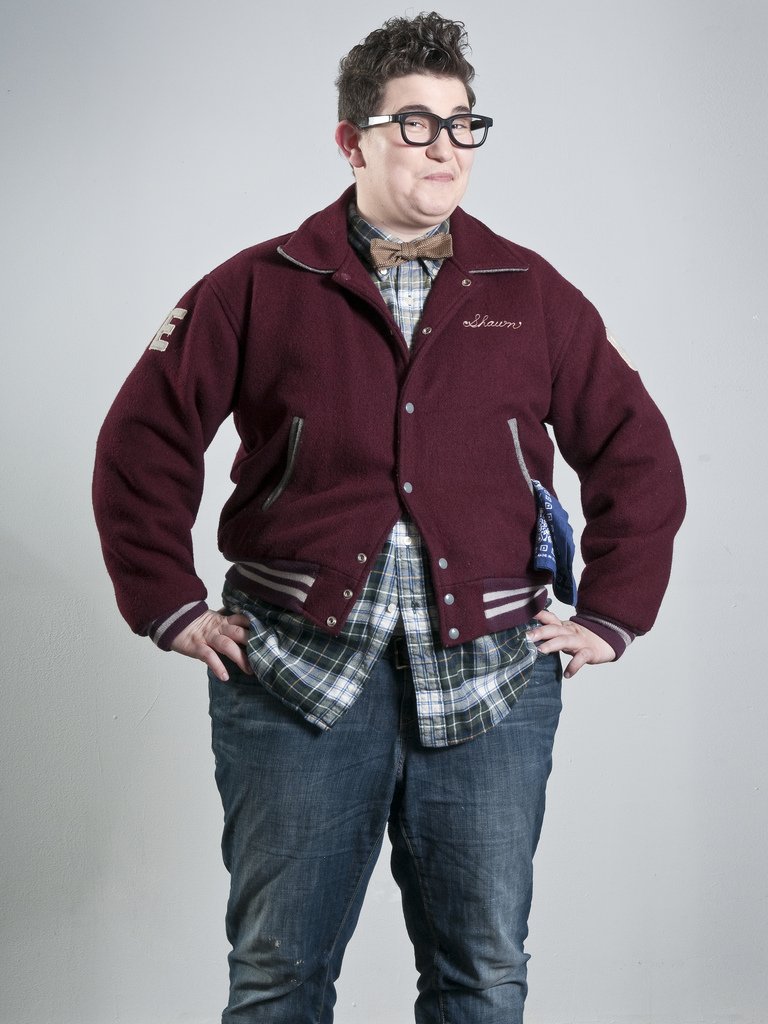 Ariel in Vintage Levi’s 501s. Styling and Photography by Jahn Hall.
Ariel in Vintage Levi’s 501s. Styling and Photography by Jahn Hall.
On Slim dapperQs…
Brands like J.crew actually have a section dedicated to slim menswear — and Uniqlo stocks men’s denim in smaller sizes.
Denim isn’t made the way it was used to:
Most denim today selling for less than $50 is made from open-end threads, a technique invented to save money and create homogeneity in the 70s by chemically bonding scraps of weaker, shorter fiber cotton to make the thread. Prior to that, all denim was ring-spun, a process whereby only the longest and strongest fibers are spun into threads.
You can get anything in NYC — including a custom-made pair of denim. Loren, based in Greenpoint, will measure you up and make the cut from around $550. It’s not cheap — but we’re talking about a one-of-a-kind pair of denim made for you. If you can’t afford custom-made denim, make nice with your tailor. PS: Loren also offers up denim repair and alterations.Invest in your investment:
Now that you’ve splurged on that $200 pair of denim, it’s best to make ’em last. Wash them…occasionally…at best. True denim heads will go for a year without washing their new raw selvedge denim to get the most desired wear from their investments. When you do wash them, wash them inside out in cold water — and hang them up to dry. The dryer does more to fade out your favorite blues than the washer does!
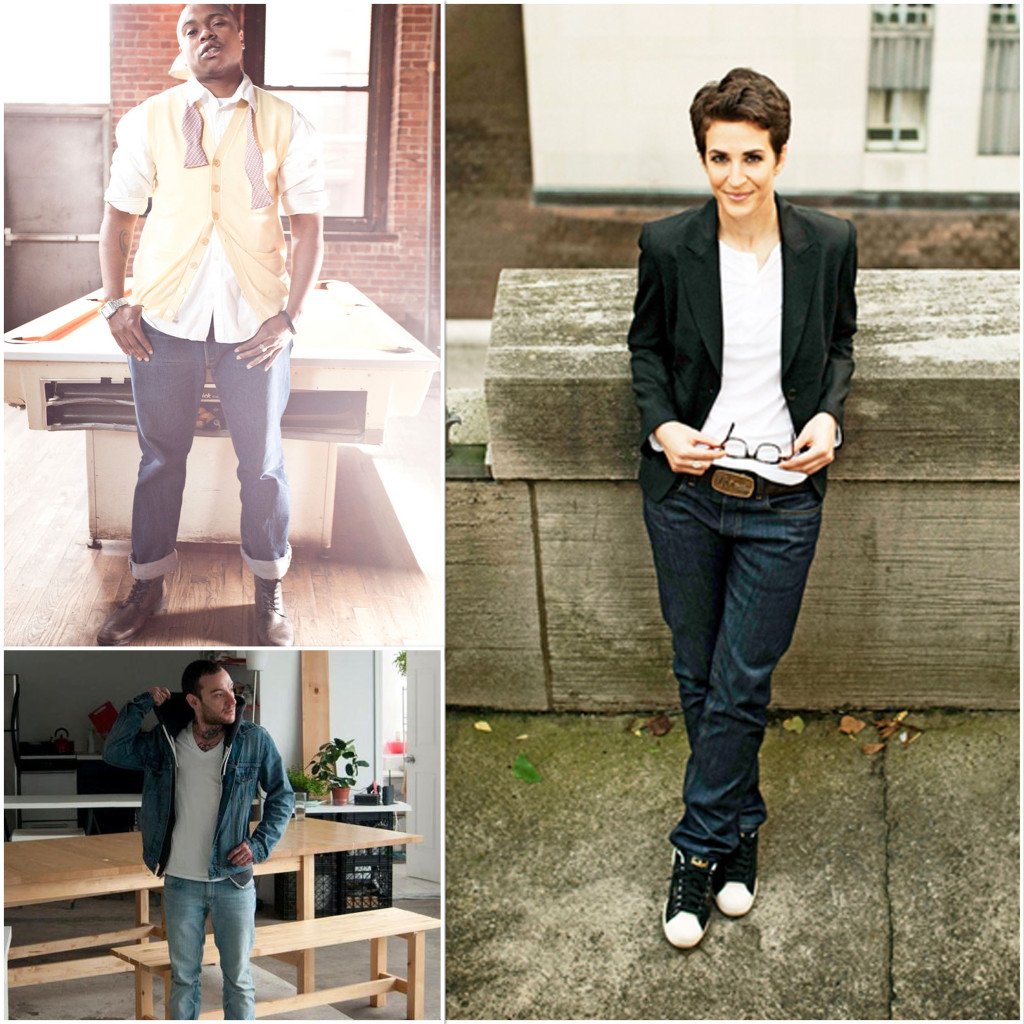 Levi’s works for many sizes and genders. Here Tiq Milan (top left), Rocco Katastrophe (bottom left), and Rachel Maddow (right) show the versatility of Levi’s
Levi’s works for many sizes and genders. Here Tiq Milan (top left), Rocco Katastrophe (bottom left), and Rachel Maddow (right) show the versatility of Levi’s Sonny Oram in Abercombie’s “Erin Skinny” jean. Photo Courtesy Sonny Oram of Qwear.
Sonny Oram in Abercombie’s “Erin Skinny” jean. Photo Courtesy Sonny Oram of Qwear.
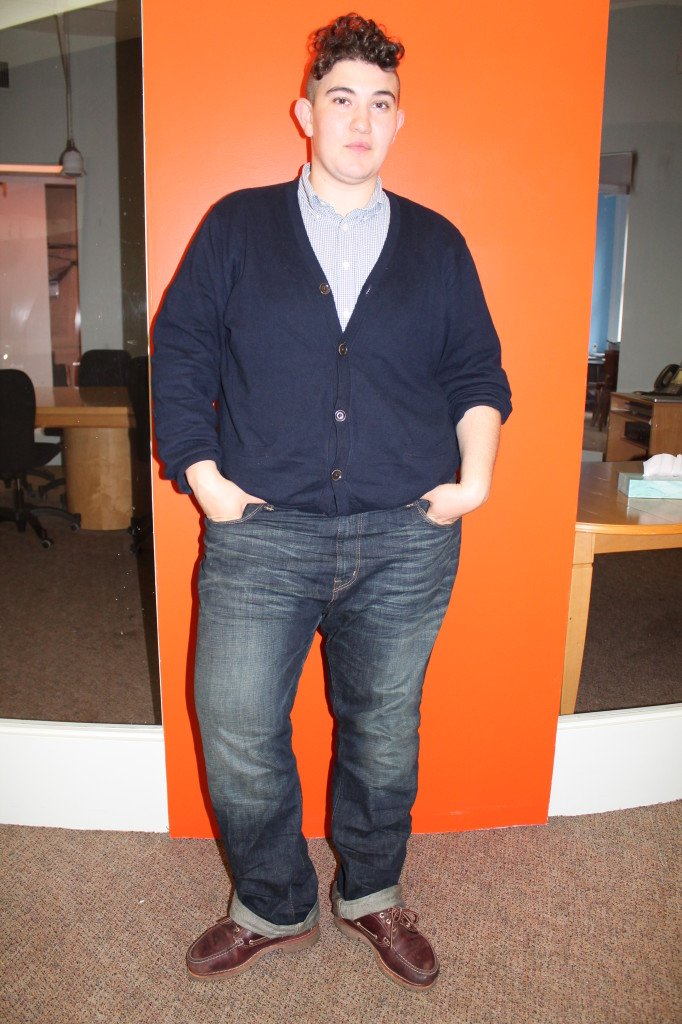 Ariel in American Eagle Slim Straight Jeans
Ariel in American Eagle Slim Straight Jeans
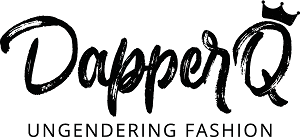
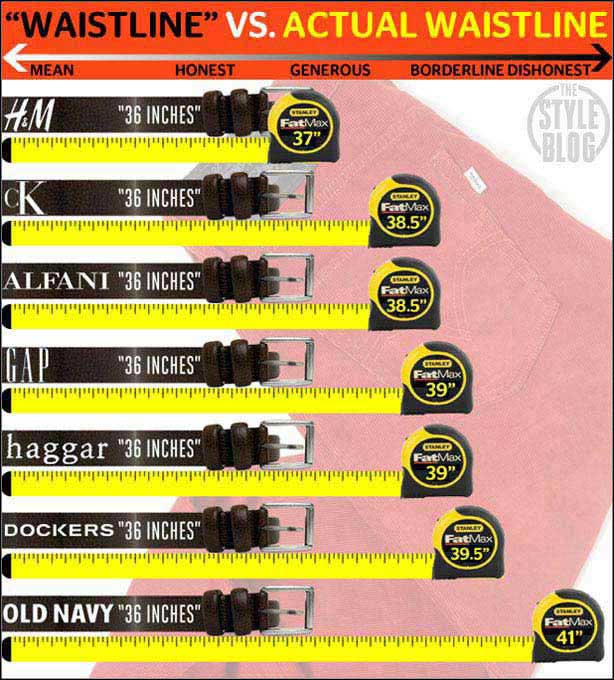
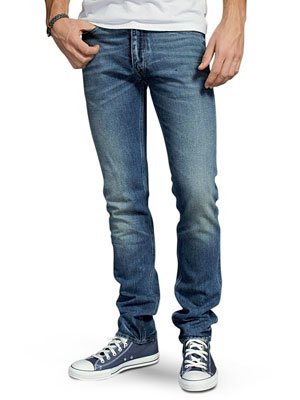
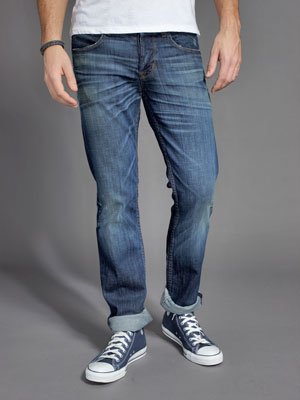
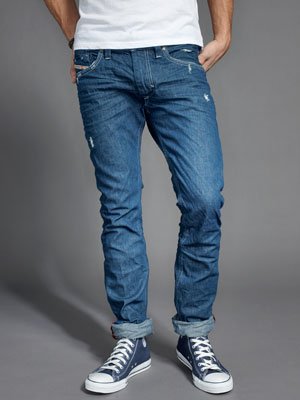
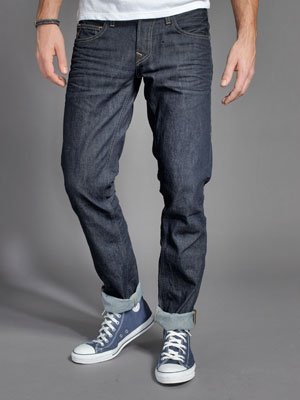
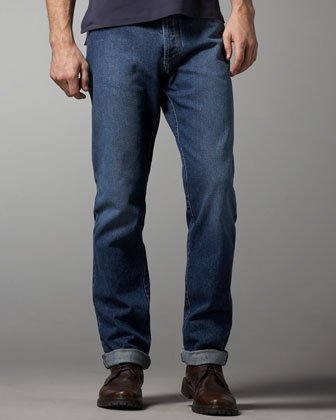
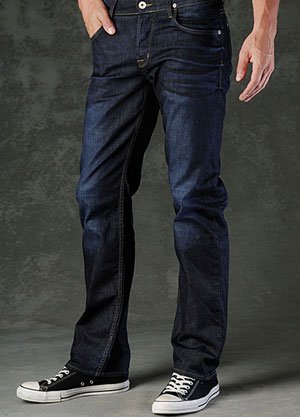
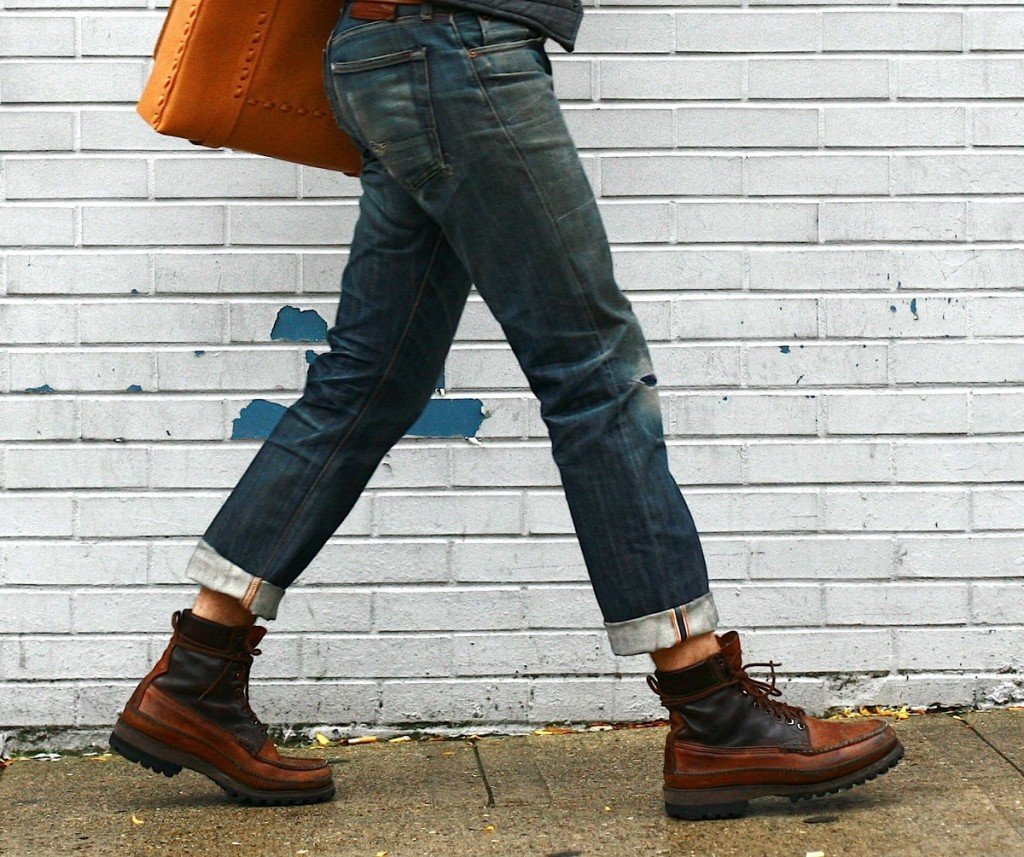

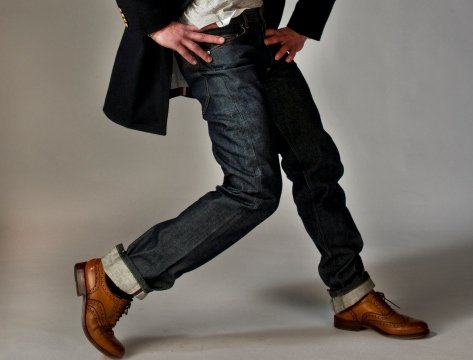
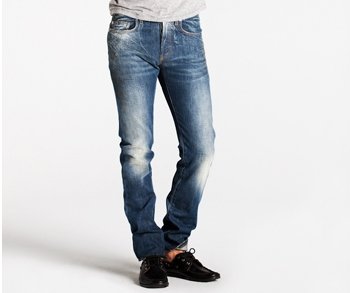
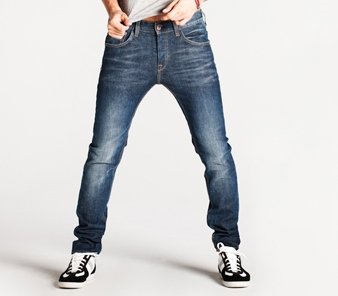
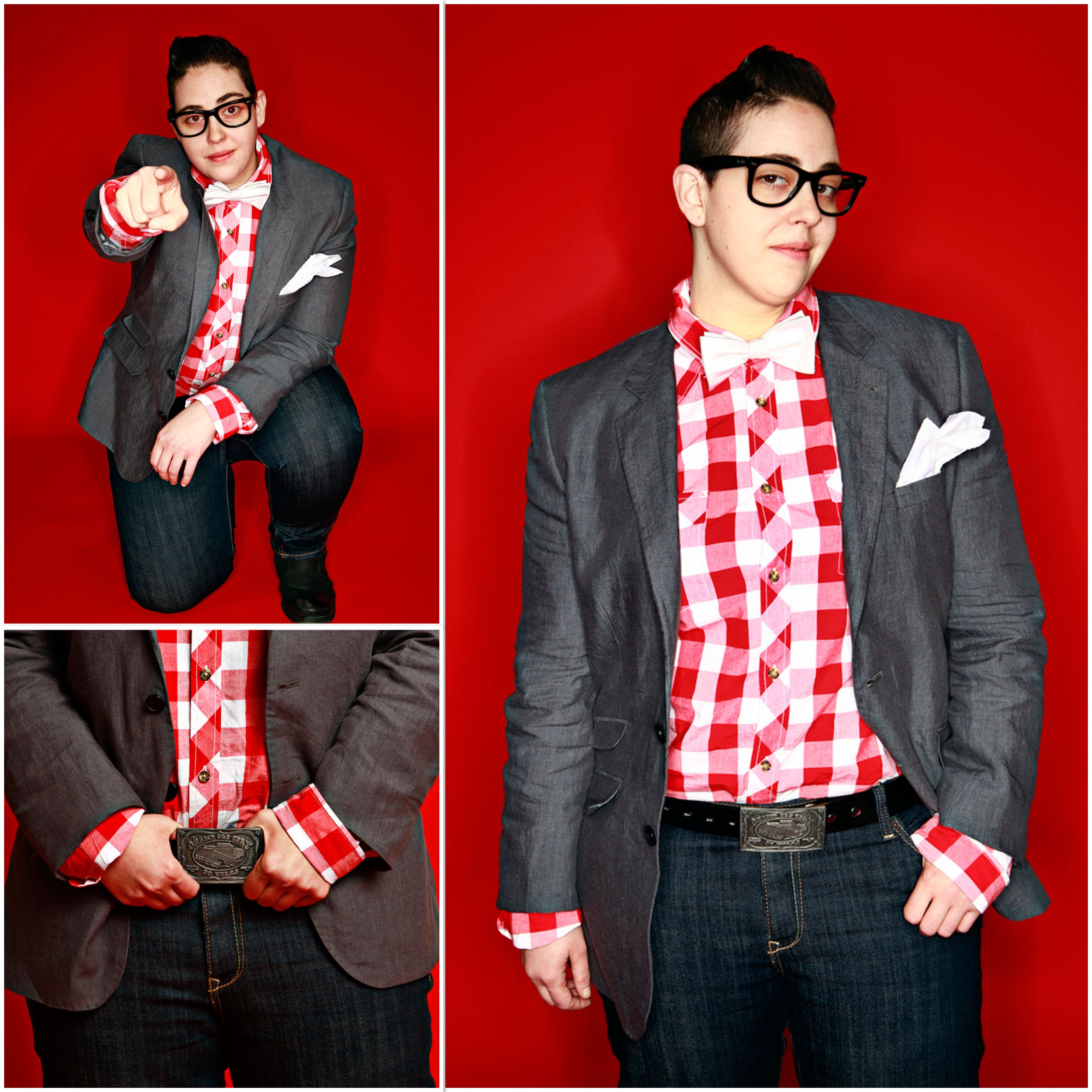
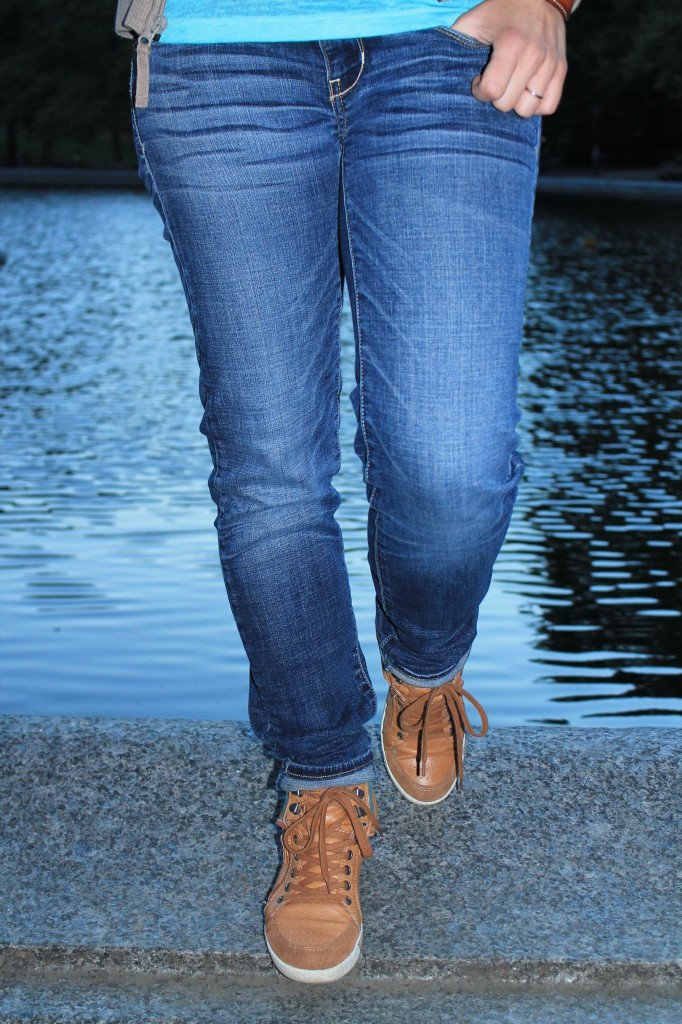
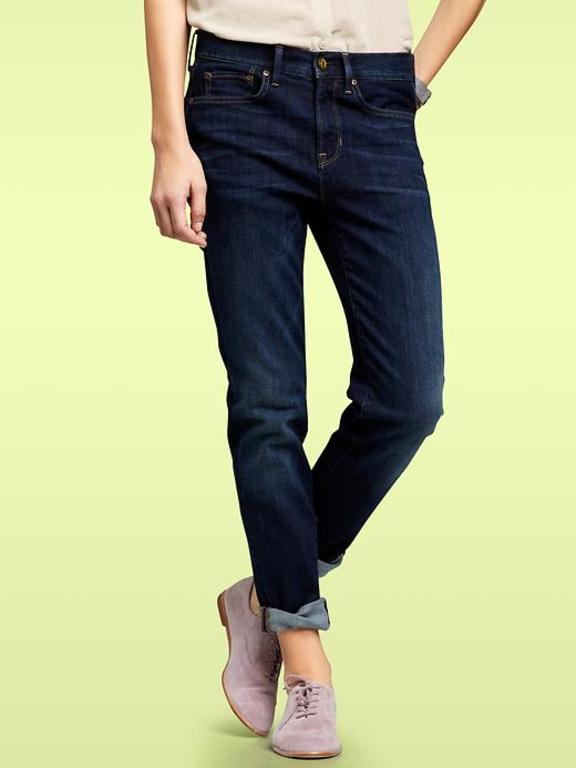


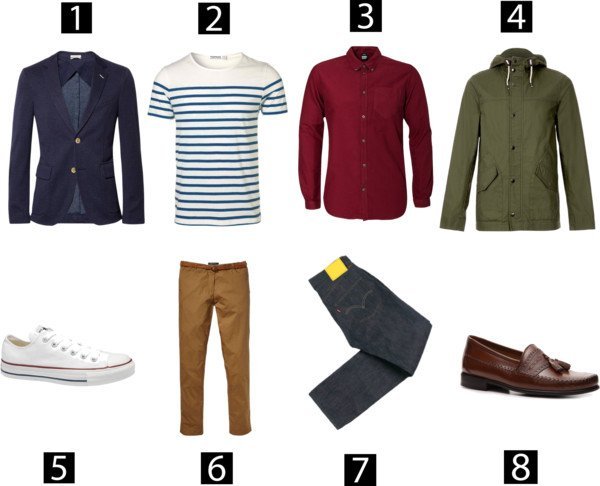

Shopping for a new pair of jeans may not be easy. There seems to be a lot of factors to consider. Thanks for the tips.
I am looking for another brand to the Levi’s 550 that I have been wearing. Any suggestions other than going to the stores and trying all the brands.
Your suggests would be welcome.
thanks, stephen
Hi, I’m trying to help a male friend buy a pair of jeans. He’s built like an athlete — tall and slim, with muscular thighs. He’s having trouble finding jeans that fit around his waist and thighs. What brands would you recommend? Thanks!
i like it
Nice article,shopping for jeans has always been a frustration for me. Now i have some insights on what to look for next time i go shopping.
Hi Anita, i liked your article and all the aspects are clearly explained. Well one of my friend always trouble finding a right type of denim for him. He has slim body and medium height but he never find a prefect waist fit jeans for him. So can you please suggest some brands which he can look for?